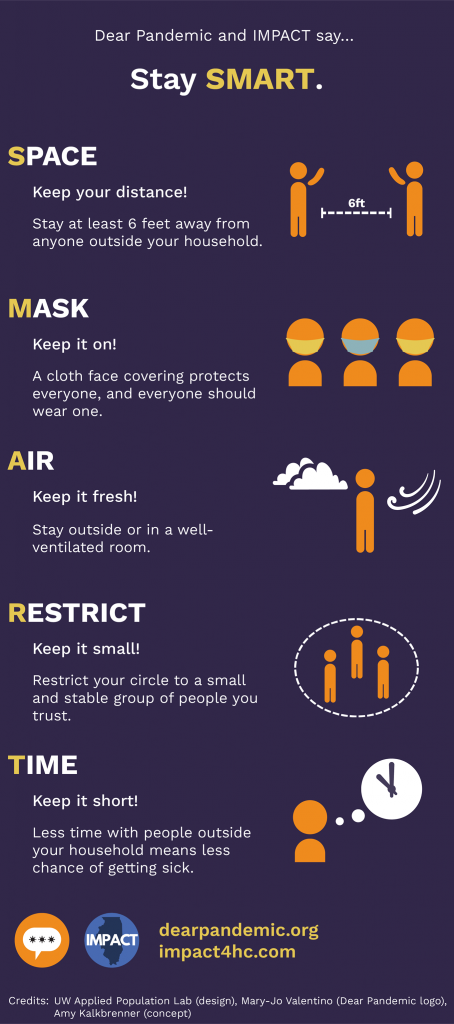The World Health Organization (WHO) has identified excessive COVID-19-related information as a public health crisis, calling it an “infodemic.” The infodemic has been exacerbated by uncertainties inherent in an emerging infectious disease and the scientific process more generally. Together with inconsistent governmental messaging, these factors have led to challenges in delivering accurate, timely, and trusted information to the public.
In a manuscript recently published in Public Health Reports, Dr. Sandra Albrecht and colleagues present the origins, aims, and lessons learned from Dear Pandemic, a multidisciplinary, social media–based COVID-19 science communication project. The project aligns with the WHO’s call for scientists to engage in infodemic management to help ensure the public has access to timely and accurate information that is easily understood.
 Dear Pandemic was created in March 2020 after the founders, public health researchers, became inundated with queries about COVID-19 from family and friends. They created Dear Pandemic on social media to consolidate their communication efforts in a public forum. Coming up on the 2-year anniversary of its launch, the project has a combined monthly reach of more than 4 million unique views across 3 social media platforms (Facebook, Instagram, and Twitter), an email newsletter, and a website, with coverage throughout the US and more than 60 countries around the world. Content is adapted for each social media platform to maximize readability and visibility. A subset of posts is translated and adapted into Spanish for Querida Pandemia, the Spanish-language page on Facebook. The project’s goals are to: (1) disseminate trustworthy, comprehensive, and timely scientific content about the pandemic and other health topics to lay audiences and (2) promote media and science literacy, equipping readers to better manage health-related infodemics within their own networks.
Dear Pandemic was created in March 2020 after the founders, public health researchers, became inundated with queries about COVID-19 from family and friends. They created Dear Pandemic on social media to consolidate their communication efforts in a public forum. Coming up on the 2-year anniversary of its launch, the project has a combined monthly reach of more than 4 million unique views across 3 social media platforms (Facebook, Instagram, and Twitter), an email newsletter, and a website, with coverage throughout the US and more than 60 countries around the world. Content is adapted for each social media platform to maximize readability and visibility. A subset of posts is translated and adapted into Spanish for Querida Pandemia, the Spanish-language page on Facebook. The project’s goals are to: (1) disseminate trustworthy, comprehensive, and timely scientific content about the pandemic and other health topics to lay audiences and (2) promote media and science literacy, equipping readers to better manage health-related infodemics within their own networks.
Based on practical experience, Dear Pandemic evolved to operate under a set of guiding principles that inform content and interactions with readers. These include: (1) the application of a risk reduction model framework and a (2) two-way model of communication. Posts on Dear Pandemic provide a framework for thinking about risk mitigation as a continuum and encourage readers to apply the framework to their own lives (see Figure as an example). Consistent with a harm reduction approach, this strategy aims to reduce the harms associated with certain behaviors, particularly when the restriction of behaviors is unrealistic over the long term. Also critical to Dear Pandemic’s success is a two-way model of communication. This framework calls upon experts to approach the audience as partners in conversation. This differs from the one-way didactic framework customary in most public health communication strategies.
Dear Pandemic has emerged as an example of a promising new paradigm for public health communication to bridge the chasm between the scientific community and the practical decision-making needs of the public. The project provides a roadmap for other scientists (and public health agencies) interested in using social media as an outreach tool, and serves as a unique case study informing future efforts to combat health misinformation.

